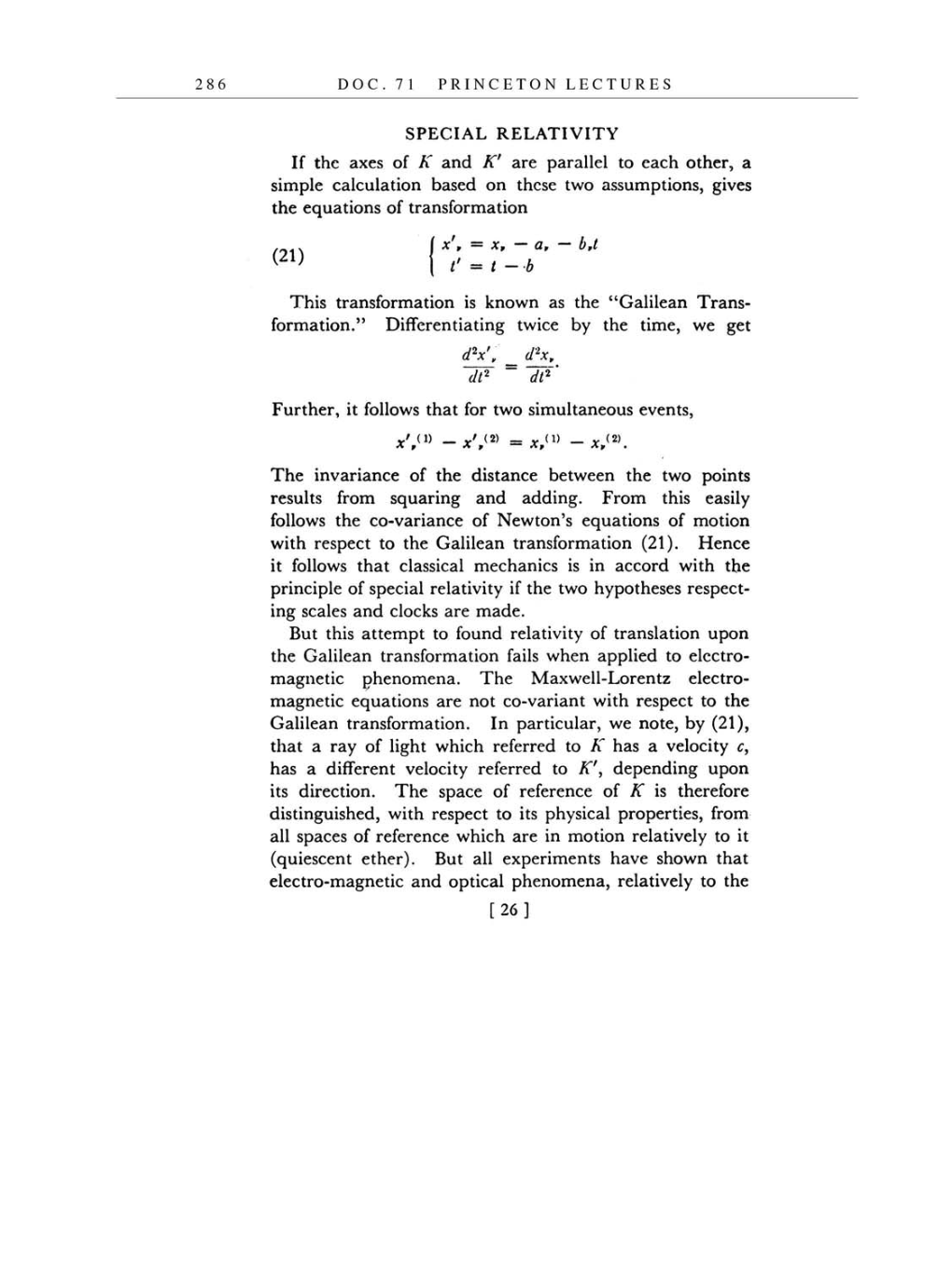286 DOC.
71
PRINCETON LECTURES
SPECIAL
RELATIVITY
If the
axes
of K
and K'
are
parallel to
each
other,
a
simple
calculation
based
on
these
two assumptions, gives
the
equations
of
transformation
(21)
j
x,
-
xp
a,
b,t
|
/'
=
t
-
b
This transformation
is
known
as
the “Galilean
Trans-
formation.”
Differentiating
twice
by
the
time,
we get
d2x'v
_
d2x,
dt
=
dt2'
Further,
it follows
that
for
two
simultaneous
events,
X'v(1)
_
X'v(2)
=
xv(1)
_
xv(2).
The invariance of the distance between the
two
points
results
from
squaring
and
adding.
From
this
easily
follows
the co-variance of
Newton’s
equations
of motion
with
respect to
the Galilean transformation
(21).
Hence
it follows
that
classical
mechanics
is
in
accord with the
principle
of
special
relativity
if the
two hypotheses
respect-
ing
scales
and
clocks
are
made.
But this
attempt
to
found
relativity
of
translation
upon
the
Galilean transformation
fails
when
applied to
electro-
magnetic
phenomena.
The Maxwell-Lorentz electro-
magnetic equations
are
not
co-variant
with
respect
to
the
Galilean transformation. In
particular,
we
note,
by (21),
that
a
ray
of
light
which referred
to
K has
a
velocity
c,
has
a
different
velocity
referred
to
K',
depending upon
its
direction. The
space
of
reference
of
K
is
therefore
distinguished,
with
respect to
its
physical
properties,
from
all
spaces
of
reference which
are
in
motion
relatively to
it
(quiescent ether).
But all
experiments
have
shown
that
electro-magnetic
and
optical phenomena, relatively to
the
[26]
